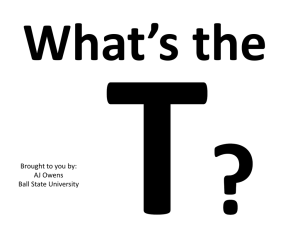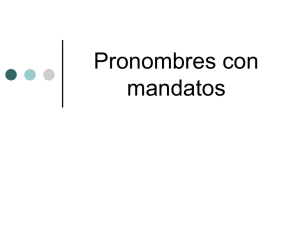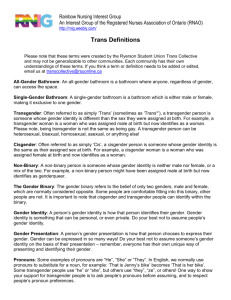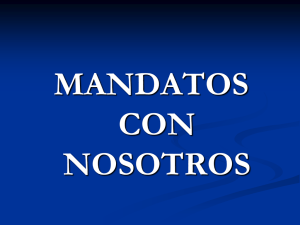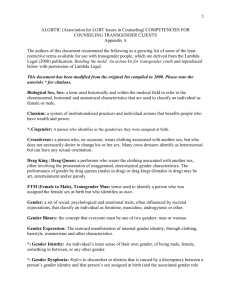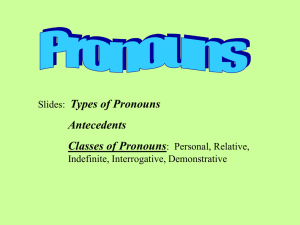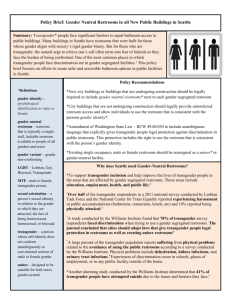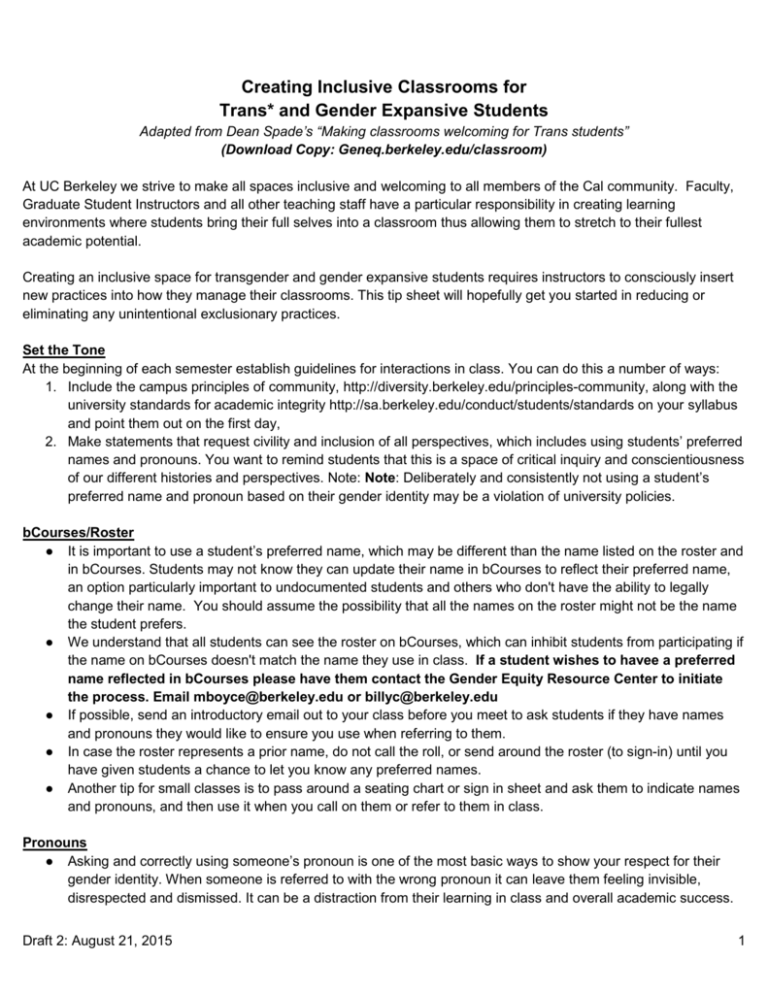
Creating Inclusive Classrooms for
Trans* and Gender Expansive Students
Adapted from Dean Spade’s “Making classrooms welcoming for Trans students”
(Download Copy: Geneq.berkeley.edu/classroom)
At UC Berkeley we strive to make all spaces inclusive and welcoming to all members of the Cal community. Faculty,
Graduate Student Instructors and all other teaching staff have a particular responsibility in creating learning
environments where students bring their full selves into a classroom thus allowing them to stretch to their fullest
academic potential.
Creating an inclusive space for transgender and gender expansive students requires instructors to consciously insert
new practices into how they manage their classrooms. This tip sheet will hopefully get you started in reducing or
eliminating any unintentional exclusionary practices.
Set the Tone
At the beginning of each semester establish guidelines for interactions in class. You can do this a number of ways:
1. Include the campus principles of community, http://diversity.berkeley.edu/principles-community, along with the
university standards for academic integrity http://sa.berkeley.edu/conduct/students/standards on your syllabus
and point them out on the first day,
2. Make statements that request civility and inclusion of all perspectives, which includes using students’ preferred
names and pronouns. You want to remind students that this is a space of critical inquiry and conscientiousness
of our different histories and perspectives. Note: Note: Deliberately and consistently not using a student’s
preferred name and pronoun based on their gender identity may be a violation of university policies.
bCourses/Roster
● It is important to use a student’s preferred name, which may be different than the name listed on the roster and
in bCourses. Students may not know they can update their name in bCourses to reflect their preferred name,
an option particularly important to undocumented students and others who don't have the ability to legally
change their name. You should assume the possibility that all the names on the roster might not be the name
the student prefers.
● We understand that all students can see the roster on bCourses, which can inhibit students from participating if
the name on bCourses doesn't match the name they use in class. If a student wishes to havee a preferred
name reflected in bCourses please have them contact the Gender Equity Resource Center to initiate
the process. Email mboyce@berkeley.edu or billyc@berkeley.edu
● If possible, send an introductory email out to your class before you meet to ask students if they have names
and pronouns they would like to ensure you use when referring to them.
● In case the roster represents a prior name, do not call the roll, or send around the roster (to sign-in) until you
have given students a chance to let you know any preferred names.
● Another tip for small classes is to pass around a seating chart or sign in sheet and ask them to indicate names
and pronouns, and then use it when you call on them or refer to them in class.
Pronouns
● Asking and correctly using someone’s pronoun is one of the most basic ways to show your respect for their
gender identity. When someone is referred to with the wrong pronoun it can leave them feeling invisible,
disrespected and dismissed. It can be a distraction from their learning in class and overall academic success.
Draft 2: August 21, 2015
1
●
●
●
●
●
●
In small classes, during introductions, ask people to indicate the pronoun they feel comfortable disclosing. e.g.
“My name is Sally and I use the pronouns she, her, hers and they”. Yes, non-trans people can have really
problematic responses to these go-rounds when they aren't used to them or don't understand the point.
Sometimes people who are not trans will make a joke of it or will say they don't care which pronoun is used for
them in a way that implies "look how cool and flexible I am" without understanding the privilege that comes with
that flexibility unavailable to transgender or gender expansive persons whose gender identity is regularly
ignored, mistaken or punished.
Some pronouns might should strange or grammatically incorrect, e.g. ze, zim, zers, they, theirs. It is important
for us to respect how the students see and refer to themselves rather than how we see them or our need to be
correct.
In language classes (especially when it is a more gendered language than English, such as Spanish, Arabic,
etc.), the same guidelines you outlined regarding pronouns need to apply to any statements that would indicate
a student’s gender. For example, being addressed with the wrong gender verb or adjective is just as
humiliating as being addressed with the wrong pronoun.
When you do not know the pronoun, ask. Try “What are your pronouns?”, “Which pronouns do you like to
hear?”, “Can you remind me which pronouns you like for yourself.” “I use masculine pronouns. I want to make
sure to address you correctly, how do you like to be addressed?” If can feel awkward at first, but it is not half as
awkward as getting it wrong or making hurtful assumptions.
If you make a mistake about someone’s pronoun, correct yourself. Going on as if it did not happen is actually
less respectful than making the correction. This also saves the person who was misidentified from having to
correct an incorrect pronoun assumption that has now been planted in the minds of classmates or anyone else
who heard the mistake. As instructors, especially, it is essential that you model respectful behavior.
If someone else makes a mistake, correct that person. It is important to provide a correction, whether or not the
person whose pronoun as misused is present. This allows everyone present to avoid future mistakes and to
correct the mistaken assumption that might now have been planted in their minds.
Group Projects and In-Class Directions
● Avoid gendered directions, e.g. “All the men in one group and all the women in another”.
● When creating groups for in-class discussions or course projects, consider random selection such as counting
off by a specific number or passing around a bowl of the group number, e.g. Group 1, Group 2, etc., that
students can randomly draw from.
● Think about how gender norms, or ideas about what men and women should be like, are being enforced in
your classroom
Confidentiality & Curiosity
● It is never ok to disclose to anyone the gender identity or sexual orientation of another without the express
permission of that person. In some cases, doing so can be a violation of our university sexual harassment
policy
● Do not engage in speculative conversations about someone’s gender identity or sexual orientation, if you hear
students or other instructors doing so, particularly in the classroom, stop the conversation since it is not only
inappropriate but such continued behavior may violate our university sexual harassment policy based on sex or
gender stereotyping. It is your responsibility to stop the conversation. e.g. “Excuse me, please stop this
conversation, it is inappropriate”.
● Never ask personal questions of trans people that you would not ask of others. Never ask about body
functions, anatomy or medical care.
Draft 2: August 21, 2015
2
●
Never ask a transgender student their former name, why or how they know they are trans, their sexual
orientation or practices, their family’s reaction to their gender identity or any other questions that are irrelevant
to your relationship with them unless they invite you to do so or voluntarily share the information.
Restrooms
● For long classes where it is important to provide students a break, consider if students might need to go further
to find a gender inclusive or single stall restroom and plan the break accordingly. The current list of single stall
restrooms that many students refer to may be found here: geneq.berkeley.edu/restrooms
● Additionally, it is important to note that persons may use the restroom that corresponds with their gender
identity regardless of perceived gender presentation. Never assume which restrooms a person uses, when
asked about restrooms give directions to all close restrooms.
Campus Climate
● Responses to recent Campus Climate Survey Report, March 2014
● 47% of genderqueer and transgender respondents reported experiences of “exclusionary behavior in the last
year”
● 35% of genderqueer and transgender respondents did not feel that their gender/gender identity is respected on
campus. This compared with 5% of men feeling this way and 7% of women.
● 34% of genderqueer undergraduates, 38 % of transgender undergraduates and 55% of other gender identity
undergraduates do not find the campus climate comfortable.
● Over half of undergraduate students perceived tension in the residence hall with regard to a person’s gender
identity.
Definitions
Transgender: A term for people whose gender identity, expression or behavior is different from those typically
associated with their assigned sex at birth. Transgender is a broad term and is good for non-transgender people to
use. “Trans” is shorthand for “transgender.”
Cisgender: term used to describe people who, for the most part, identify as the gender they were assigned at birth.
For example, if a doctor said “it’s a boy!” when you were born, and you identify as a man, then you could be described
as cisgender. (Cis is Latin for “on the near side of”, same side of)
Gender Identity: An individual’s internal sense of being man, woman, transgender, or another gender; is internal and
therefore not necessarily visible to others
Gender Expression: Refers to all of the external characteristics and behaviors that are socially defined as either
masculine or feminine, such as dress, grooming, mannerisms, speech patterns and social interactions. Social or
cultural norms can vary widely and some characteristics that may be accepted as masculine, feminine or neutral in
one culture may not be assessed similarly in another.
Gender-expansive is an umbrella term used for individuals that broaden commonly held definitions of gender,
including its expression, associated identities, and/or other perceived gender norms, in one or more aspects of their
life.
Genderqueer (alternatively non-binary) is a catch-all category for gender identities that are not exclusively
masculine or feminine—identities which are thus outside of the gender binary and cisnormativity
Draft 2: August 21, 2015
3
Sexual Orientation: The direction of one’s sexual (erotic) and/or romantic attraction towards the same gender,
opposite gender, or multiple genders. It is on a continuum and without a set of absolute categories.
Sexual Orientation terms are gay, straight, lesbian, bisexual…….it is separate from gender identity and thus
transgender persons also have a sexual orientation. Sexual Orientation is not strictly limited to sexual behavior, i.e.
who one chooses as a sexual partner
Homophobia: irrational fear and intolerance of people who are homosexual or of homosexual feelings within one’s
self.
Heterosexism: assuming every person to be heterosexual therefore marginalizing persons who identify as lgbq. It is
also believing heterosexuality to be superior to homosexuality.
Cissexism (or cissexual assumption) is the appeal to norms that enforce the gender binary and gender
essentialism, resulting in the oppression of gender variant, non-binary, and trans identities.
Cisgenderism denies, ignores, denigrates, or stigmatizes non-cisgender forms of expression, sexual activity,
behavior, relationship, or community. Cisgenderism exists in everyone — transgender individuals as well as cisgender
individuals alike
Transphobia: prejudice arising from negative valuing and stereotyping resulting in discriminatory behavior defined by
fear, hatred, disgust of transgender, transsexual and other people because of their (supposed) non-conforming gender
presentation and/or status
Draft 2: August 21, 2015
4


